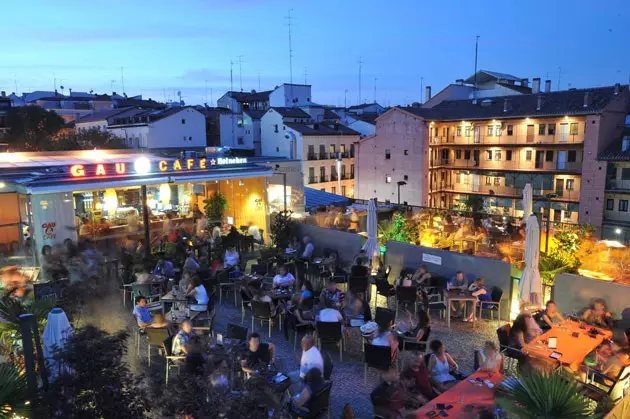
Views of the corrala from the Gaudeamus Café
Privileged spaces that today are resurrected from dark past decades (you have to see how the 80s and 90s were in some of their corners...), some of these neighborhoods preserve the soul of the old city and others were born in the cold post-industrial era or between the wars to house the last social link: immigrants, workers and other humanoids given up for lost, all together and scrambled.
1.**BELLEVILLE (PARIS)**
The center of Paris has become a glacial museum where it is hard to believe that people live. That's why we like Belleville so much, because he is alive, because there are bars with delicious wine at a good price, street cats , people who do not look over their shoulders... and in its vicinity is the cemetery where Jim Morrison rests. In addition to all this, as if that were not enough, dear travelers, the neighborhood has the best view of Paris (better than Montmatre!) from the Buttes Chaumont park, a delight.
Having said all this, you should know that at number 72 of its main street (Rue de Belleville), under a chipped lamppost (today a place of pilgrimage) a great one was born: Edith Piaf, raised by these lares that gave her that personal seal, unique and exclusive. Today this same neighborhood remains multi-ethnic and It is home to some of the best musicians in sub-Saharan Africa, such as Mohamed Diaby or Abdoulaye Traoré , in addition to other artists of different stripes such as the director and actress Maïwenn Le Besco. But in its day, it welcomed the immigrants of yesteryear who populated these lands: German Jews, Spaniards fleeing the war, Algerians, Turkish Jews, Greeks and a long etcetera. Today the Chinese population is increasing at the speed of light and the area has become a neighborhood-essence of the Paris that we all have in mind.
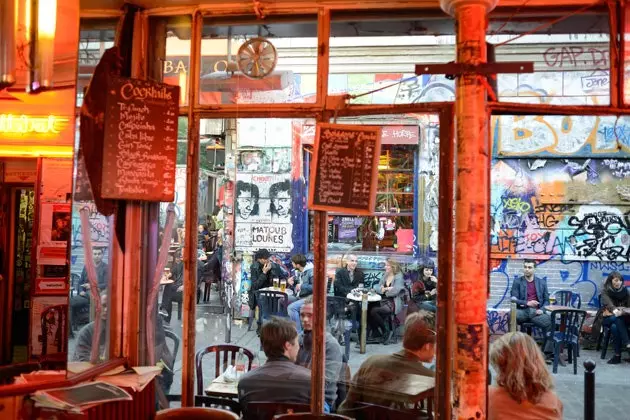
The Parisian neighborhood of Belleville
How to get: Get off at Porte de la Villette station on line 7 (the main station in the neighborhood) .
Where to eat and drink: If you want to try French cuisine in a comfortable, pleasant and reasonably priced place, the Restaurant des Arts et Sciences (three-course menu from 23 euros) is a good option, or La Rotonde bar et brasserie. For those traveling with children, the organic restaurant Les 400 Coups (12 bis rue de la Villette) is perfect. A more hybrid cuisine, with a Chilean and Argentine touch, at El Molino (181 av Jean Jaurès). For a drink celebrating the world's multiculturalism, we recommend Péniche Anako, a bar on a barge on the fabulous Canal d'Ourq that brings the neighborhood to life.
Where to sleep: We recommend that, if you go for a while, you stay in an apartment in the Laumière station area. If you go for the weekend, an affordable and charming option is St Christopher's Inns Paris Hostel (159 rue de Crimée; HD: from €52) very close to the Parc des Sciences and an old cinema. This former warehouse converted into one of the best hostels in the city overlooks the famous canal and has a cosmopolitan atmosphere with rooms for all tastes.
Not to be missed: Its street market at the top of the neighborhood (Place des Fetes) where French farmers and farmers sell their products at reasonable prices; its artists' workshops that populate the streets and the curious Museum of Music.
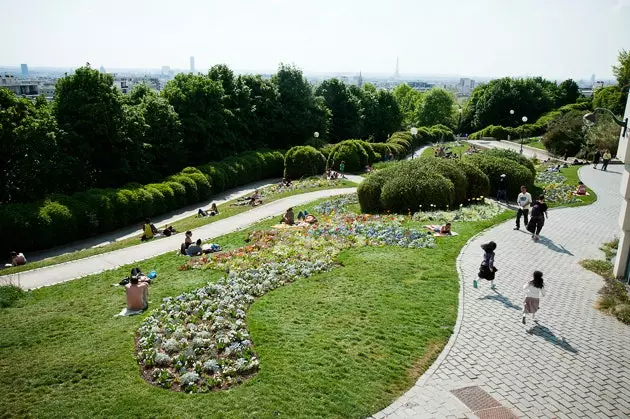
Belleville park, a whole locus amoenus
2.**ALFAMA (LISBON) **
About this hill full of underground springs and romantic viewpoints One of the oldest neighborhoods in Europe is located where Jews, Muslims and Christians have lived together since the Middle Ages. Today it is inhabited by people from all over the world surrounded by an atmosphere of an old fishing district, very popular, to which must be added an important African representation from the former Portuguese colonies (Cape Verde, Guinea Bissau, Angola, Mozambique, Sao Tome and Principe ) and countless tourists.
It is also home to the best fado houses and delicious sardinhas. and wine bars hidden among scandinhas, scholarships, and clothes hanging in the windows. That yes, in the 80s there was no one who stepped on these confines or who got on the classic number 28 tram that today takes you from the Castelo de Sao Jorge to the Plaza de Estrela (where more modern bourgeois already nest).
The promoter of a whole social and cultural movement that is developing in Alfama in recent decades it is the first female clown in Europe, Teté Ricou, who opened her Châpito circus school. In addition to being a cultural institution, Châpito is a shelter, a restaurant and a bar with spectacular views over Alfama. Today, more than 300 people participate in this project so that, according to Teté, "misery is treated grandly." The awakening that Alfama is experiencing has brought with it more initiatives and in recent years they have opened premises, bars and taverns that have given life to a historic and unique neighborhood.
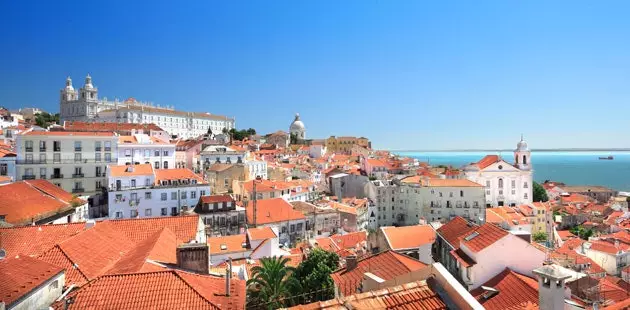
Alfama, the multicultural hill of Lisbon
How to get: If you're not afraid to exercise your legs (and you still have some strength left), the best thing to do is go up to Alfama from Santa Apolonia (get off at this metro station), to enjoy yourself and stop wherever you want.
Where to eat and drink: Châpito's restaurant is a charming place with a charming patio, unbeatable views and numerous corners where you can have a drink. For a wine and a petisco on a terrace, Caso Sério (Rua Cruzes da Sé, 5) has a magnificent corner next to Sé de Lisboa. But if you want to try the vinhos from Lisbon's many regions, head to Rua de los Remedios (one of the streets with the most famous fado houses) and have a few at Uvas e Trincas (Rua dos Remédios, 95). The couple that runs the place (an Angolan girl and a Portuguese boy) are charming. If you are looking for a restaurant with creative cuisine, we suggest Trigo Latino (Largo Terreiro do Trigo, 1).
Where to sleep: A bit modern in contrast to the neighbourhood, but the first to open in the area, is the Hotel Memmo Alfama (Travessa das Merceeiras, 27; HD: from 145 euros) and it has a terrace with great views and a swimming pool. It may not be in the neighborhood itself, but we love it, it's a short walk from Alfama and it's as cosmopolitan and intercultural as it is affordable: the Lisb' on Hostel (Rua do Ataíde; HD with bathroom: from 33 euros) .
Not to be missed: The Ladra Fair in Campo de Santa Clara next to the church and monastery of Sao Vicente de Fora and the authentic Alfama surroundings of Largo de Sao Estevao.
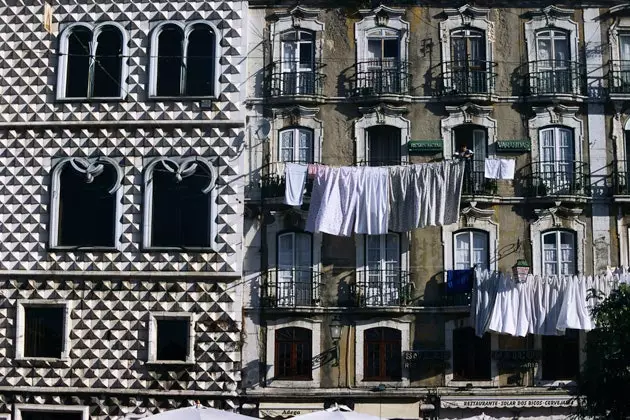
Balconies in Alfama
3.KREUZBERG (BERLIN)
There are not many cities that can boast as much multiculturalism as Berlin and few neighborhoods have that historical-multicultural yoquesequé that Kreuzberg has, a mythical neighborhood that the counterculture has drunk from since the 70s, long before the fall of the wall, when it softened your image a bit. Its history turned it into a neighborhood confined to isolation after the Second World War (Hitler installed its main administrations here and for this reason it was bombed during the war and poorly rebuilt in the postwar period). Subsequently, the construction of the Wall gave it the perfect isolated point for all those who could to abandon it and other new inhabitants to settle.
Almost half are Turkish , but in its day it was also inhabited by squatters and punks. This is how it became a benchmark, so much so that in one of its legendary clubs, SO36 (name of the postal code), characters like Iggy Pop or David Bowie played. But not only glam made Kreuzberg its sacrosanct neighbourhood: African-American culture also housed interesting representatives and the LGBTQ movement has one of its historic centers on the banks of the Spree.
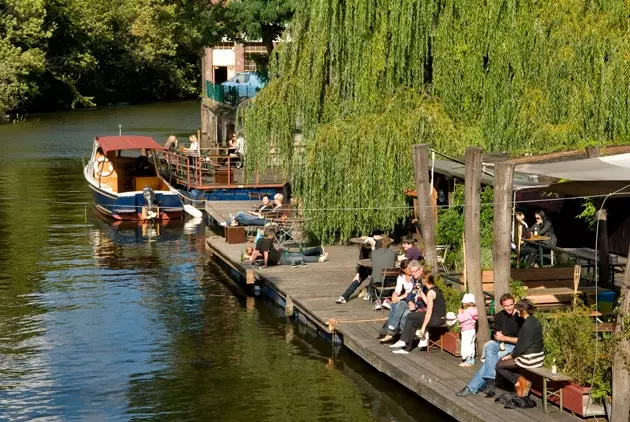
Kreuzberg District
To all this we must add the beginning of the German punk movement despite the fact that the west wing of the neighborhood, after the fall of the wall, has been transformed into a much more gentrified area. But hairs to the sea, the cultural offer of Kreuzberg is overwhelming . The Kunstlerhaus Bethanien (Mariannenplatz, 2) is an old hospital rescued by squatters, today an artistic-cultural center with a theater, exhibitions, a home for retired elderly people and a Turkish library. How to get: The U6 metro line takes you to the neighborhood, to the Kottbusser Tor metro station (Kotty for Berliners). Where to sleep: To imbue yourself with the style of the neighborhood, Die Fabrik (Schlesische Straße 18; HD: from €58) is perfect: a former turn-of-the-century factory restored in 1995. Where to eat: Kebaps you have to choose all you want, the best. But if you're looking for something a little more elaborate, we suggest you head over to Jolesch (_Muskauer Straße 1 , jolesch.de) _where you can try traditional Austro-Hungarian cuisine in a romantic setting. A great Chinese restaurant is The Long March Canteen (Wrangelstraße 20) where you will taste the best dim sum in the area. Nor can you leave here without having a brunch one of those days when the night has confused you. We suggest you do it at Mathilda (Graefestraße 12), a small place in the heart of the neighborhood that will not disappoint you. If you are looking for familiar faces, you better go to the tapas restaurant of Daniel Brülh, the protagonist of the film Goodbye Lenin , the Bar Raval (Lübbener Straße 1) . Do not miss: The classic checkpoint charlie (Friedrichstrasse, 43-45) border between the Soviet and North American zones during the cold war), the Jewish Museum (Lindenstrasse, 9-14) or the Schwules Museum (Mehringdamm, 61) the first museum focused on homosexuality. From Viktoria Park there is a good view of the southern part of the city whose cross gives this neighborhood its name. Another must-see is its Friedhöfe vor dem Halleschen Tor cemetery , in which the writers Adelbert von Chamisso and Ernst Theodor Amadeus Hoffman lie.
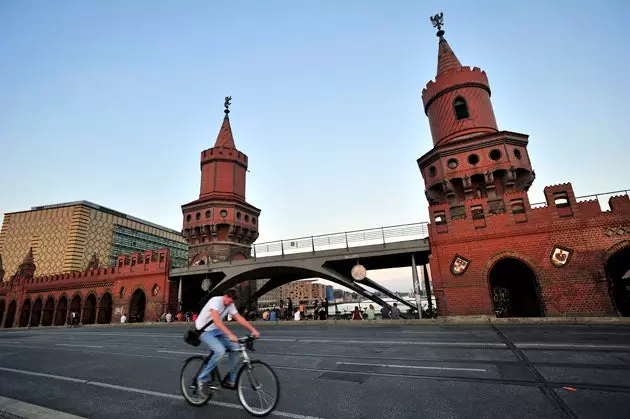
The bridge connecting Kreuzberg and Friedrichshain
4.**BRICK LANE (LONDON)**
This classic ghetto to the east of the city where immigrants have lived for centuries has now **become the latest trend in Europe** and one of the best after hours and pubs in Europe. the city. First it was the Huguenot refugees, then the Irish and finally the Jews followed by the Bangladeshis who started by setting up their textile centers and cheap labor here (today even the street signs are written in their language). These waves of immigrants gave way to a flood of markets, some of which are among the best in a city that boasts of them.
The Brick Lane Market has been going on since the 17th century and is the most chaotic of all : flowers, fruit, used things, small businesses, designer stands... But don't miss the ones around the old Truman Brewery either. The most fun day to take a dip in the crowds is Sunday first thing in the morning and the best thing is to go through Old Street, go through Rivington Street and reach Redchurch Street where Brick Lane appears to take it from one end to the other. You will find many immigrants today, among its ranks waves of Spaniards who adore this area (probably on Sunday many still haven't gone to bed) : they drink beer in its streets and enter the various bars (for all tastes: more fashion, antrazos, pubs, commercials...). Within walking distance you'll also find the Spitafield Market, if you want to do some designer shopping from home.
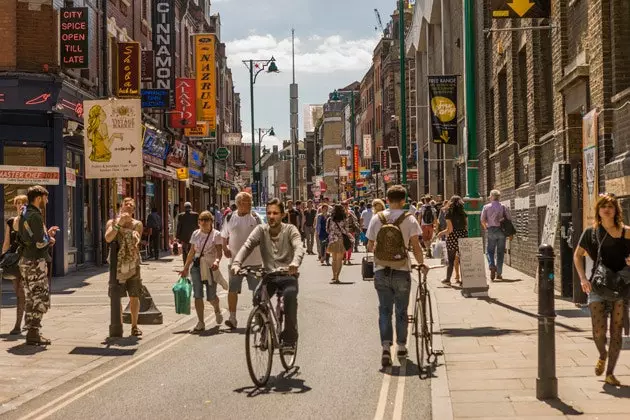
A potato market come to more
How to get: The nearest tube station is Aldgate East, although there are voices calling for the name to be changed to Brick Lane (easier, right?).
Where to sleep: Hoxton Hotel (81 Great Eastern Street, HD: from 230 euros) is a perfect option to stay in the area. We don't know of charming, designer hostels in the area, although we take the opportunity to recommend one, Clink 78 (78 King's Cross Road; HD: from 78 euros), an old court where The Clash were tried in 1978 and which has now been converted into a nice hostel where rock still roams.
Where to eat: We recommend that you try the hot cuisine of the market and the takeaway food, a mixture of all the cuisines of the world: Thai, Indian, African, Mexican... made right there , and grab a pint at The Ten Bells (on the corner of Commercial Street and Fournier Street) . It is a pub (the typically English public house) that for years was called Jack The Ripper because here the most famous murderer in London deceived two of his victims who were already a little bit high.
You can't miss: The spectacular graffiti that inhabit the neighborhood.
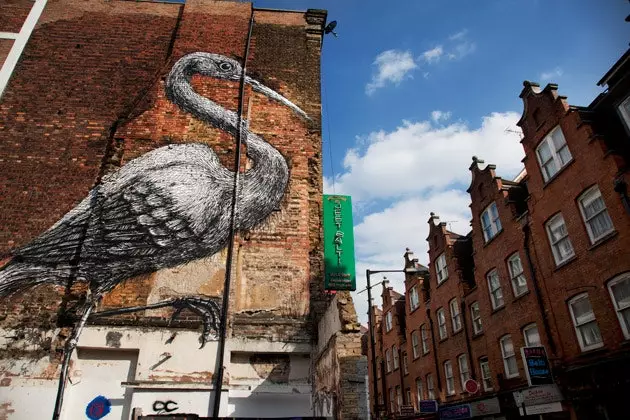
A trompe l'oeil from Roa
5.**LAVAPIÉS (MADRID) **
Before being expelled, the Jews lived in this area where, today, the coexistence between lifelong residents of the neighborhood, immigrants and people with a dose of tolerance and adequate reality leaves an amusing mix. Most of today's immigrants come from sub-Saharan Africa but there is also a good representation from Pakistanis, Moroccans, Bangladeshis, Indians and Dominicans , whose restaurants, shops and booths fill the streets making you feel like you're in another country.
But if there is something typical in the neighborhood, it is its corralas, tenement houses that emerged in the 16th century. due to the lack of space that already afflicted the neighborhood. Today some are preserved but the most famous is the one on Mesón de Paredes street, corner with Sombrerete.
In addition, the cultural offer is significant. Among its must-sees, the cinema dore (Magdalena, 10), the exhibition hall of the Spanish Film Library, whose programming allows you to see some masterpieces of the seventh art for 3 euros and the Valle Inclán National Drama Center, which is located almost in the same Plaza de Lavapiés. In addition, much more modest venues are El Teatro del Arte (San Cosme y San Damián, 3), La Sala Triángulo (Zurita, 20), or venues such as La Escalera de Jacob (Lavapiés, 9) that also schedule concerts that theater. Another concert venue in the area is El Juglar.

A basketball game in Lavapiés
How to get: take metro line 3 and get off at Lavapiés station.
Where to stay: To live the experience of staying in a corrala Mad Hostel (Calle de la Cabeza, 24; HD: from 23 euros) may convince you. If you are looking for something more intimate, and not in the same neighborhood but within its limits, the NH Palacio de Tepa (San Sebastián, 2; HD: from 172 euros) is a comfortable option that is also very close to Plaza de Santa Ana. Where to eat: Since you are here you could try one of the best-known Indian restaurants in Madrid such as the Shapla, the Baisakhi or the Taj Mahal, next to the square. Not so much for its cuisine but for the amazing views, we recommend Gaudeamus Cafe (Tribulete, 14) is an interesting place to go sometime, although lately word has spread and there are shifts for dinner and a lot of rushing. For a quiet dinner of delicious rice (it's their specialty) and also with a terrace, the option is Mano a Mano (Lavapiés, 16). If you want to try Senegalese cuisine, come to Baobab (Plaza de Cabestreros) . In addition, you will find innumerable options to have some beers or some wines or whatever your body asks for (ask for that mouthful!). Do not miss: The San Fernando Market on a Saturday morning (Plaza Agustín de Lara) to see some of its particular stalls; or the self-managed center La Tabacalera (Embajadores, 53), a huge old tobacco factory converted into a surprising place full of twists and turns, associations and free activities and workshops. Not exactly in the neighborhood but very close, the social and cultural center La Casa Encendida (Ronda de Valencia, 2), with a very interesting library and media library and a remarkable cultural program .
